Driving digital transformation one touch at a time
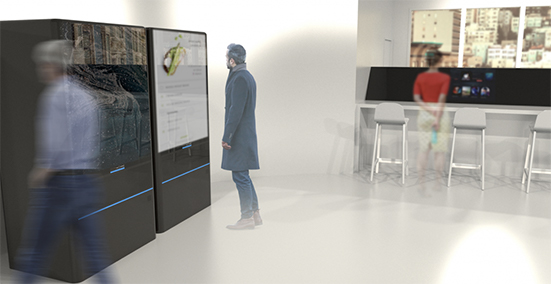
Driving digital transformation one touch at a time 3M Share Experientia gathered expert insights and voice of customer insights about intelligent self-service applications to create coherent storytelling for 3M clients and to provide compelling choices through predictive, engaging and learning touchpoints. We conducted a global benchmark research and interviews with industry experts to understand trends, changing paradigms and crucial concepts around intelligent self-service and created a B2B sales tool prototype: the innovation playbook that communicates the research outcomes. 3 things to know Global research Our benchmark focused extensively on Europe, US, China and Japan while industry experts joined our research from 5 different countries, bringing insights from all around the world. Driving digital transformation Design principles modelled empathic, people-centric frameworks for developing self-service experiences. Innovation playbook in action Future scenarios illustrate fast, intuitive, hassle-free experiences to end users who expect beauty and usability, familiarity and seamless connections. Gallery In depth Service mix: Design thinking Envisioning Business strategy design Information architecture Participatory design Service design Ethnography Context 3M offers a wide range of standard and customizable single-touch and multi-touch systems that are easy to integrate into OEM and display solutions, as well as a portfolio of fully integrated displays. This allows 3M clients to create interactive and immersive touchscreen experiences with systems and displays that are engineered for commercial applications and backed by advanced touch technology that’s ultra-fast, reliable and responsive. Challenge 3M reached out to Experientia to better understand its customers context and future scenarios that could strengthen its service offering. Research Experientia conducted a global benchmark research, collecting best practices and global innovative examples of self-service UX/UI systems, extracting relevant themes and trends. We interviewed 10 experts in architecture, design, food & beverage to gather first hand knowledge on how customer experiences are fueling innovation in the segment, and to understand trends, changing paradigms and crucial concepts around intelligent self-service. Design Experientia prioritized the interview insights using affinity mapping and constructed near-future scenarios analyzing different factors affecting UX. Ideation sessions generated new ideas to redefine how brands engage customers with intelligent self-service applications. Experientia designed a self service innovation playbook documenting research insights, design principles and scenario. It comes in a box containing the insights booklet, idea cards and impact map for co-creation, to aid collaborative design making. Impact The self service innovation playbook is now being used as a B2B sales tool to engage clients. Related projects All Services Behavioral design Research and assessment Strategy B2B Collaboration UI, redesigning the filter navigation experience B2B Reinventing customer and supplier interactions for a multinational flooring company B2B AR tools for industrial maintenance Go back to our portfolio
AR tools for industrial maintenance
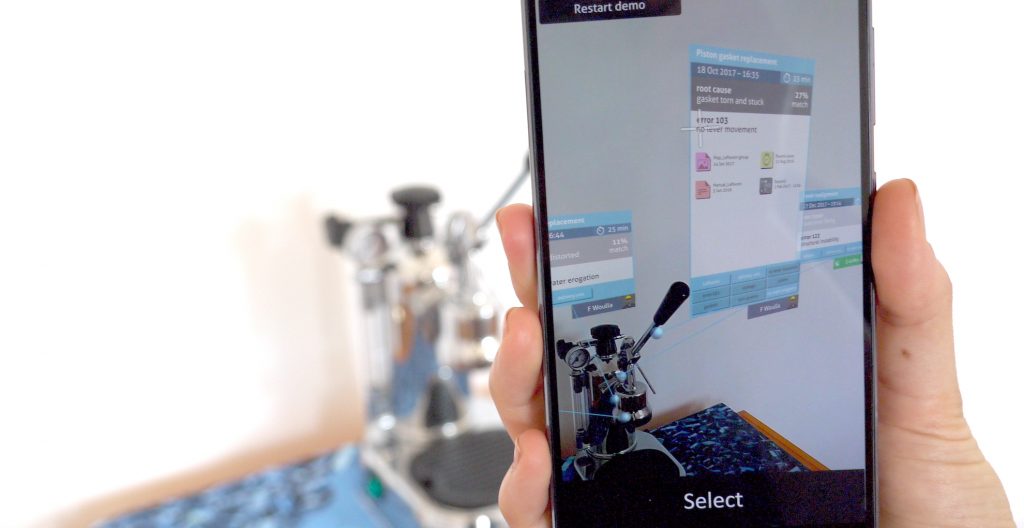
AR tools for industrial maintenance Hitachi Share Experientia created digital AR tools that added intelligence and efficiency to the industrial maintenance and repair processes in the shopfloor’s context. A working hi-fi AR prototype was demonstrated to the C-suite. Based on the as-is maintenance process and existing pain points, Experientia conceptualized use-case scenarios, interaction flows and interfaces. 3 things to know Express delivery Our benchmark focused extensively on Europe, US, China and Japan while industry experts joined our research from 5 different countries, bringing insights from all around the world. Focus on core issues Through user journey mapping, main issues of industrial maintenance were uncovered and turned to key solutions for the interaction concept. Innovation throughout Cutting edge technology platforms like AR Core and Google’s Cloud Speech API were used to create a coherent system between mobile, smartwatch and earbuds. Gallery Multilayer tech ecosystem that combines three devices: smartphone, smartwatch and headphones Watch interface Watch interface Analysis diagram of the maintenance process and existing pain points In depth Service mix: Prototyping Information architecture Service design Behavioral modeling Context The client is an industrial player that has its own factories and also provides shop floor equipment to factories of their clients. In these environments any interruption in an assembly or production line is very costly. Challenge Efficient production time is lost due to misinformed, miscommunicated and non-standardized maintenance processes. The solution is a combination of user and system generated content that constantly improves according to daily incoming data about maintenance operations. The client would like to use AI and machine learning to provide values for all the stakeholders. Research Focused on worker’s needs to get jobs done rather than just spreading technologies, our solution was built on day-to-day tech providing maintainers with non-invasive support enabling them to be able to choose the best tech and device depending on the context and their personal experience. We used a (high end) coffee machine as a simulacrum of an industrial machine and mapped user journey and defined opportunities of digital tools for industrial maintenance. Design The proposed solution is a multilayer tech ecosystem that combines three devices: smartphone, smartwatch and headphones. They overlay timely, qualitative and statistical information to maintainers about assets, manuals and maintenance steps. The solution enables communication amongst colleagues and creates an easy reporting system, all integrated through a user and system generated database. Experientia designed a hi-fi prototype to showcase functionality and adequacy of an augmented multistep maintenance process on an exemplary machine. The prototype consists of an augmented reality app on mobile, an information app on a smartwatch and voice assistant interaction on a bluetooth headset. The demo across three devices proved interaction patterns and its benefits. The user journey consists of the six steps of a general maintenance process (asset failure, location, inspection, repair, spare parts, report and shift handover) organized along with macro phases (inspection, operation, communication, documentation). As second layer, we considered elements such as actors / tools and challenges and we highlighted the time consuming activities. Impact The client used the demo internally as a proof of concept to obtain further funding for future exploration As next steps the knowledge platform needs to be implemented and the solution should be tested on a shopfloor.. Related projects All Services Behavioral design Research and assessment Strategy B2B Collaboration UI, redesigning the filter navigation experience B2B Reinventing customer and supplier interactions for a multinational flooring company B2B Driving digital transformation one touch at a time Go back to our portfolio
Redesigning the visitors’ museum experience
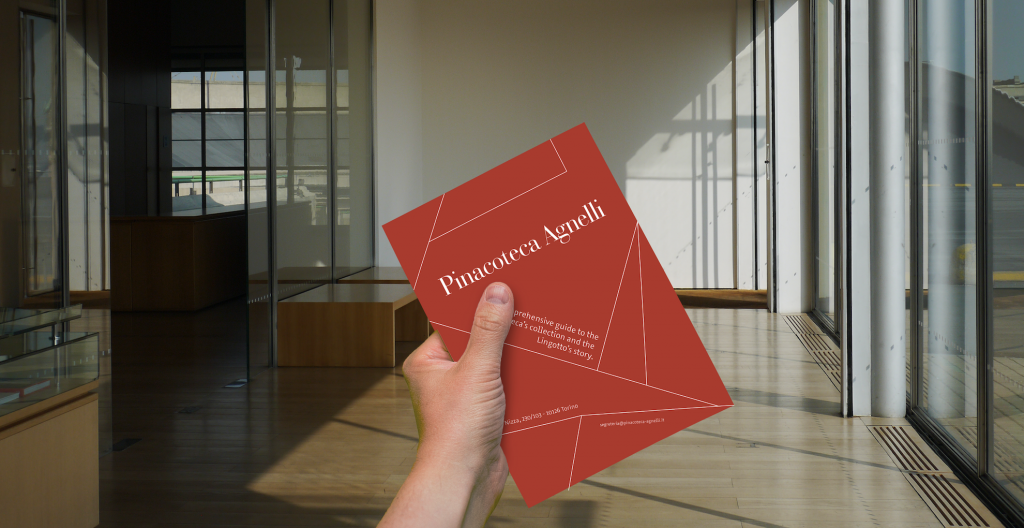
Redesigning the visitors’ museum experience Pinacoteca Giovanni e Marella Agnelli Share Reimagining and redesigning the museum experience that a visitor has through a careful analysis of the current pain points. 3 things to know Pain points of a visitor’s journey A systematic representation of an ordinary visitor’s journey that highlights the positive and negative aspects of the museum experience A concept for a new wayfinding system A proposal for the redesign of the elements that guide the visitors along the museum Ideas for a new museum experience A range of ideas that can improve the visitors’ experience, from redesigning spaces to offering new services. Gallery Take away navigation Informative facade Floor signage Signage The intensity of the visual elements becomes lighter going up Visitor journey map External view of the Renzo Piano designed museum In depth Service mix: Information architecture Service design Ethnography Context The art gallery, inaugurated in 2002, sits on the top floor of the Lingotto complex, the first FIAT factory and now a modern complex with concert halls, theatre, a convention centre, shopping arcades and a hotel. The Gallery contains a selection of works from the private collection of Gianni and Marella Agnelli. The collection is housed in the “jewellery box”, a steel body designed by Renzo Piano, with an area of 450 square meters raised 34 meters from the test track on the roof of the factory. Challenge The location within the Lingotto complex creates a multitude of wayfinding challenges for the visitor. The challenge was thus how to create a new visitor experience that helps guide visitors but also provides a new identity for the museum. Research Four colleagues explored and mapped the services provided by the Pinacoteca Agnelli. Only two were native Italian speakers. We collected experiences from people that visited Pinacoteca for the first time. This allowed us to create a systematic representation of an ordinary visitor’s journey that highlights positive and negative aspects of the museum experience. Design The design activities started with idea generation activities: we conducted several brainstorming sessions internally, merged the ideas that were similar, selected the most effective, and developed the most promising one in more detail. The next phase concentrated on developing a proposal for the redesign of the elements that guide the visitors along the museum, in other words a concept for a new wayfinding system. Following a process focused on the visitor experience, we took into account the visitors’ impression of the building to inspire the new design of the signage. A gradient recalls the experience that visitors have while going up the elevators: from a chaotic environment to a delightful and sophisticated art space. By using the shapes of the roof and the 5th floor we want to enhance the link to the architectural space by creating an echo of the structure inside the Pinacoteca Agnelli. We also developed a range of ideas that can improve the visitors experience, from redesigning spaces to offering new services. Impact The museum is in the process of implementing the Experientia design guidelines. Related projects All Services Behavioral design Research and assessment Strategy Brand UX Qualitative research on food and drink consumption to develop new consumer services Brand UX Packaging upgrade for Chinese food producer Go back to our portfolio
Low2No: shaping the future of sustainable living
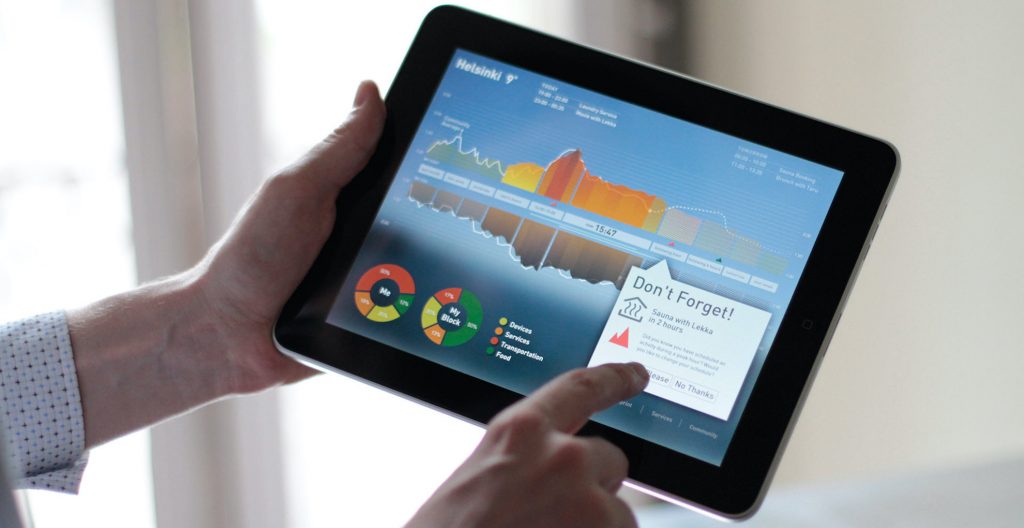
Low2No: shaping the future of sustainable living Sitra, the Finnish Innovation Fund Share In the former container port area of Helsinki, a building block named Airut (“messenger” or “herald” in Finnish) has risen to showcase innovative solutions for green developments worldwide. In collaboration with the engineering firm Arup, the architect studio Sauerbruch Hutton and Galley Eco Capital, Experientia has been a key contributor of this mixed-use development block, which houses around 500 residents, together with small-carbon-footprint services. 3 things to know Creating value through service design We designed energy demand management solutions and services and coordinated “mixed use” service offerings. The core of the service was enabling participatory solutions, such as games, competitions, workshops and websites for all its users. Behavioral change We analyzed drivers of behavioral change like environmental & life constraints, motivation and belief, social pressure and constraints, cultural framework, architectural and interface affordances, and designed fifty initial ideas for tools and services to facilitate behavioral change in Jätkäsaari Award winning Airut and Low2No have already won two awards – the 2011 Italian national prize for innovation in services and an acknowledgement prize in the 2011 Holcim awards for sustainable construction. Gallery In depth Service mix: Prototyping Information architecture Participatory design Service design Ethnography Useful links: Italian National Prize for Innovation in Services Blog post 2011 Holcim awards for sustainable construction Blog post Context The climate crisis requires new ways of designing and living our built environment, particularly in colder countries like Finland. Sitra, the Finnish innovation agency, launched an international competition for a low carbon housing and commercial building complex in Jätkäsaari, a reclaimed goods harbour to the west of central Helsinki, that aims to facilitate behavioural change towards more sustainable lifestyles. Challenge The competition was won in September 2009 by an international team led by global design, engineering and planning firm, Arup, providing engineering and sustainability services. The team also included Berlin-based Sauerbruch Hutton as lead architects and consumer behavior-change strategists Experientia. The building complex covers 22,000 square metres and provides new residences, office and retail space. Emissions are reduced through building design and performance, mobility systems and food production Research As the experience design partner, Experientia’s role has been to nudge the behavior of the people that visit, live and work at Airut, in a lasting sustainable direction. This nudge is being achieved through actively involving potential future residents and entrepreneurs in the development of their future environments, through the design of impactful, sophisticated and sustainable service offerings, and through the creation of behavioral change programmes. Design These interventions help to reduce energy demand and carbon emissions by enabling residents and workers to make better choices about their consumption while enjoying a very high quality of life. They are, in other words, “soft infrastructure” offerings that will complement the block’s “hard infrastructure” for energy and carbon management, including geothermal preheating and cooling, building integrated photovoltaics and a carbon neutral bio-heat product provided by the district heating network. Our specific deliverables have included a behavioral change framework, an award-winning service platform design, and a smart meter user interface design. Experientia has also worked on the planning and design of services, to create, within the Low2No project, a “Food Hub” (offering services related to the purchase, consumption and sharing of regional, organic food, an ethical and sustainable alternative to the products commonly offered in the Finnish market); an “Eco-laundry” (using highly efficient practices and detergents with a low environmental impact); and a communal, wood-fuelled sauna (an eco-friendly response to the presence of a private electric sauna in most Finnish homes). Impact Construction has been completed and the block is now occupied. From now, the sustainable ideals that govern its day-to-day life act as a model and example for the rest of Helsinki, Finland and the world. It has already won two awards – the 2011 Italian national prize for innovation in services (awarded to Experientia), and an acknowledgement prize in the prestigious 2011 Holcim awards for sustainable construction (awarded to the full design team). italian National Prize for Innovation in Services Blog post 2011 holcim awards for sustainable construction Blog post Related projects All Services Behavioral design Research and assessment Strategy Cities & InfrastructureSocial innovation ToNite: social innovation and urban regeneration in Turin, Italy Social innovation Turin Public Libraries, redesigning the cultural experience Social innovation COE, Strengthening access to justice through non-judicial redress mechanisms Go back to our portfolio
XME Pay: redefining an m-payments ecosystem
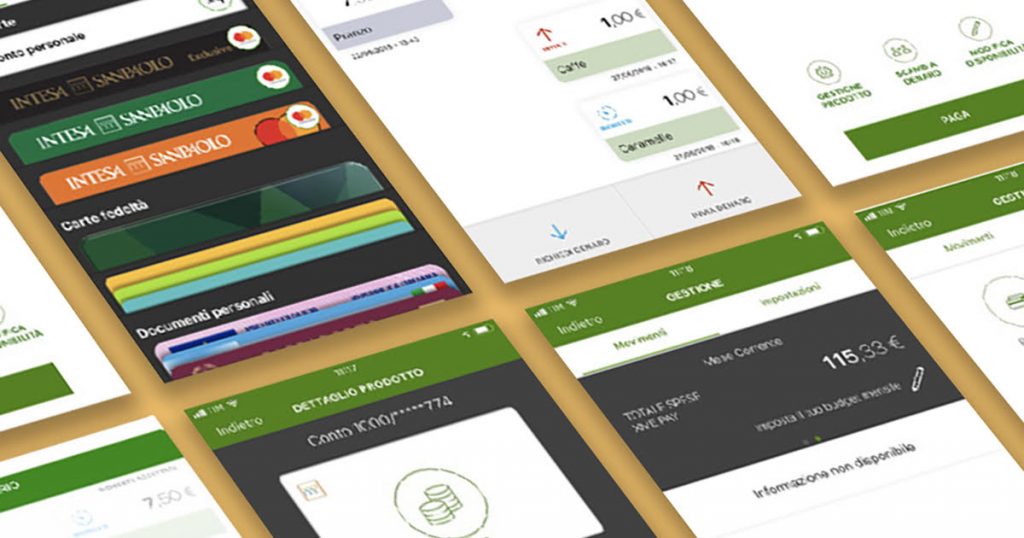
XME Pay: redefining an m-payments ecosystem Intesa Sanpaolo bank Share The human-centered approach is now central to the finance industry, as banks have become savvy in how to best connect to their customers’ needs and desires. As part of this trend, Intesa Sanpaolo asked Experientia to collaborate in the ideation and development of innovative features for a payment app (XME Pay). 3 things to know A step forward for digital and mobile payments The app is designed to be simple and immediately usable by a wide range of users. It also provides new services and functionalities, to improve on existing solutions. Working in agile mode To make development faster, we experimented with hybrid modes of prototyping, UX/UI design and agile methodologies. This helped ensure an efficient process and technically feasible solutions: concepts translate insights into actionable innovation opportunities to be prioritized, prototyped and evaluated. They took the form of platform or service visualizations, product design sketches, feature ideas, interaction and user interface solutions. Ongoing checks with service users To speed up the process of prototype testing and design iterations, we carried out several test rounds (with young users, seniors, professionals and families). Gallery In depth Service mix: Prototyping Information architecture User experience testing Behavioral modeling Useful links: Link to XME Pay Service by ISP Context Mobile and contactless payments continue to grow at an astonishing rate in Italy. In this context, Intesa Sanpaolo needed to quickly develop an effective mobile solution, able to compete both with the solutions provided by the main market players (Apple, Google) and with new innovative local players (SatisPay). Challenge Experientia was asked for a support during the contextual research, the definition of service concepts and prototypes, and the usability tests. Research Experientia conducted 16 contextual interviews in Milan and Naples, 10 with end-users and 6 with merchants. The interviews allowed us to identify payment behaviors and routines, and to generate ideas for accessory services such as discount management and loyalty cards. Design The study of the concept features was fundamental in the definition of the first and subsequent prototypes. Working in Agile, it was possible to quickly carry out several iterations of the application, and to test the functions with users in special sessions: some were dedicated to usability testing (training evaluation), others to specific insights, with different solutions in comparison (A/B testing). Impact The final solution was then developed and released in the summer of 2018, and was adopted in the first six months by 1.2 million customers (18% of the bank’s multi-channel customers). Link to XME Pay Service by ISP Related projects All Services Behavioral design Research and assessment Strategy Finance Banca 5, a new branchless bank model Consumer technologyFinance BancoSmart, an award-winning ATM Finance CSA: sentiment-based decision support platform for crypto-currency trading Go back to our portfolio
XME Salute: integrating insurance offerings with wellness and health practices
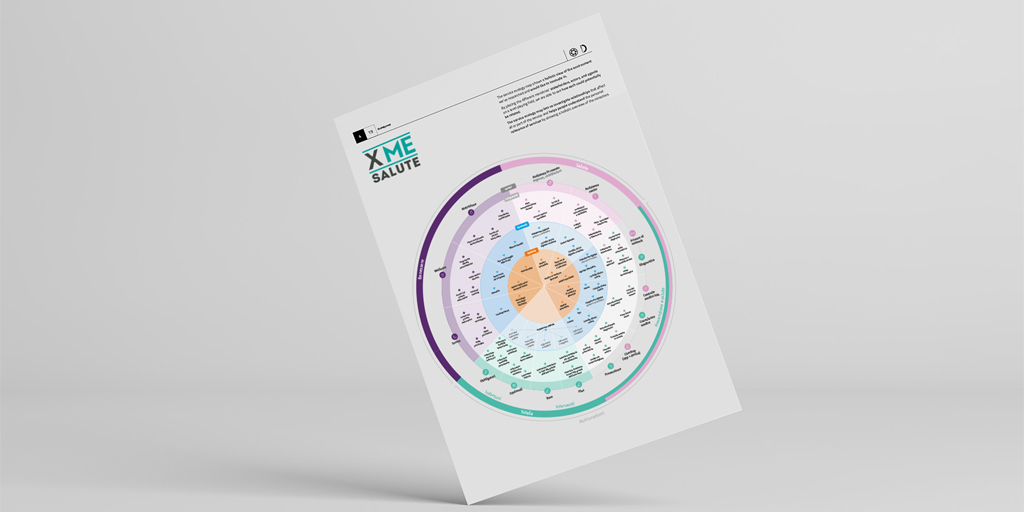
XME Salute: integrating insurance offerings with wellness and health practices Intesa Sanpaolo bank Share Analysis of the areas of overlap between welfare practices and insurance offering, up to the realization of a banking product able to enhance them both. 3 things to know Redefine the meaning of “insurance product” Research results allowed us to identify behavioral patterns regarding the attribution of value and meaning in health and wellbeing areas, and define hypothetical use scenarios on how to involve users in a holistic self-care. Facilitating and enabling behavioral change Based on an analysis of the offer and on the formative evaluation, we were able to create a better definition of the service model and a detailing of pre-requirements to convey this service through digital/web and mobile platforms. Drivers of behavioral change We analyzed drivers of behavioral change such as Environmental & Life Constraints, Motivation and Belief, Social Pressure and Constraints, Cultural Frameworks, and Architectural and Interface Affordances. Gallery In depth Service mix: Prototyping Information architecture User experience testing Behavioral modeling Useful links: Link to XME Salute Service by ISP Context Since the middle of the last decade, the phenomenon of private healthcare insurance in Italy has increased regularly: in 2016, 10 million Italians declared that they had private healthcare insurance, and the reason for the choice is due to a fundamental reason that prevails over everything else: the length of waiting lists (72.6%). To deal with a context in which users give up medical treatment because it is too expensive, Intesa Sanpaolo has launched an innovative service, able to integrate wellness practices (e.g. improving nutrition, sleep, …) with easy access to a network of clinics in which to book online medical examinations, diagnostic tests, dental and physiotherapy services. Challenge The Intesa Sanpaolo Innovation Center turned to Experientia for ongoing support in defining value propositions for its new set of services, called XME Salute (“Health 4 me”). We investigated behaviours, values and convictions people have on themes such as wellness, health and their relation with insurance products. Research Research results allowed us to identify some behavioral patterns regarding the attribution of value and meaning among health and wellbeing areas, enabling us to create hypothetical use scenarios to understand how to involve users in a holistic self-care. We analyzed drivers of behavioral change such as Environmental & life constraints, Motivation and belief, Social pressure and constraints, Cultural framework, Architectural and interface affordances. Design Based on the offer and the formative evaluation, we were able to better define the service model and detail some pre-requirements in order to convey this service through digital/web and mobile platforms. Impact Health services are an important testbed for the cultural change required by digital, so it is essential that the service model provided remains consistent with the initial design: for this reason, since the launch of the service (June 2019) we have continued to follow the evolution of features in order to keep them consistent with the service model. Link to XME Salute Service by ISP Related projects All Services Behavioral design Research and assessment Strategy Consumer technology Buttonless: engaging users in interactions with keyless devices B2B Collaboration UI, redesigning the filter navigation experience Cities & InfrastructureSocial innovation ToNite: social innovation and urban regeneration in Turin, Italy Go back to our portfolio
CityOpt: Engaging citizens to facilitate energy demand responses
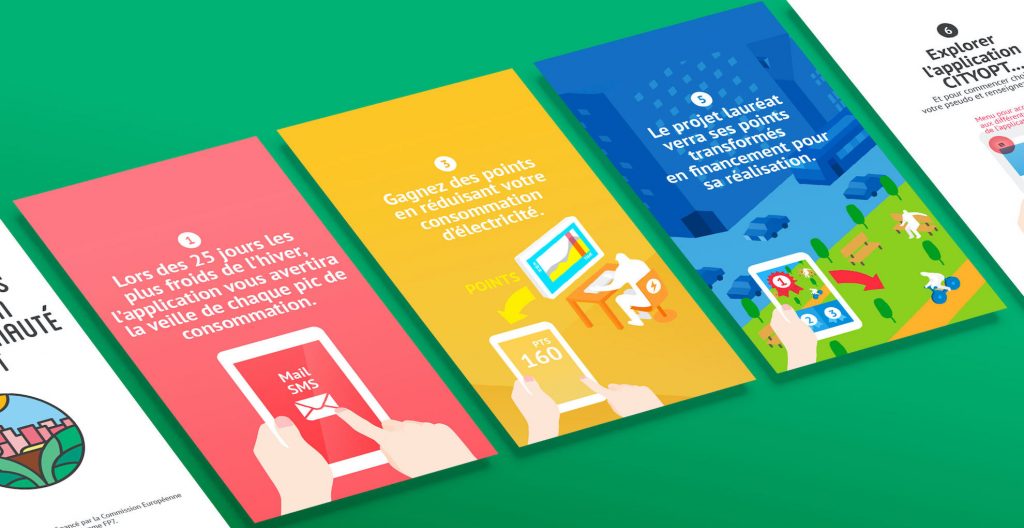
CityOpt: Engaging citizens to facilitate energy demand responses European Commission FP7 Share CityOpt, a research project funded under the FP7 European Commission framework, is getting citizens involved in testing new tools to reduce energy consumption during peak loads, with the goal that this pilot program will set a new trend in protecting locations with fragile electricity supplies. 3 things to know Encouraging behavioral change The CityOpt app helps people reduce domestic energy consumption during energy peak loads and nudges them towards more eco-friendly behaviors. Incentivizing energy reduction Their savings were rewarded with points, which participants could “donate” to a local community project of their choice, helping to maintain people’s engagement with the app. Real time monitoring An office block in Vienna, Austria, uses the CITYOPT app to identify the best scenario to integrate energy supply sources with fluctuating temperatures into an efficient micro-energy network.. Gallery In depth Service mix: Policy development Envisioning Business strategy design Prototyping Information architecture Participatory design Service design User experience testing Context One of France’s most fragile regions, the Provence-Alpes-Côte d’Azur, is perhaps best known for its vineyards, lavender groves and sparkling coastal cities like Nice. It is however also one of France’s most fragile regions for electricity supply. Particularly in winter, when electrical heating sees electricity use rise, the locals experience frequent blackouts, as the local energy provider, EDF, tries to manage the supply. This is why Nice Côte d’Azur has been selected as a pilot city for the CITYOPT project, an initiative that aims to create new methods and tools to deal with energy consumption, and to involve local citizens in designing and testing them. CITYOPT is a pilot programme funded by the European Commission that explores and tests new tools for reducing energy consumption during peak loads. Research Experientia has led the user research activities for the pilot program. User experience methodologies have engaged local citizens from the area in interviews, workshops and design activities. These have defined what people really need to help them control their energy use, and to create a mobile app that the pilot participants will be able to use to do just that. The entire project has applied a user experience (UX) methodology, to make sure that the tools and methods that the project proposes for energy management resonate with the people who will have to use them. It’s not just Nice Côte d’Azur: other pilots are planned for Helsinki, Finland and Vienna, Austria, where similar UX methods are also being applied. Right now, the Nice pilot looks at the residential level, and explores how people’s everyday behaviors can be nudged to better support the energy use of the entire region. Model Changing individual behaviors to help the entire region The Nice Côte d’Azur local population plays a crucial role in reducing domestic electricity consumption during peak loads. To help people change the way they consume electricity, the pilot provides selected locals with the CITYOPT mobile app (aka the CITYOPT Operational tool). The app informs people about upcoming network peak loads, and then uses playful persuasion to get them to commit to lowering their energy consumption at a specific time. How the app was created – a participatory process The Experientia design team also focused on the visual design of the mobile application. In workshops for design idea creation, designers and local stakeholders came together to brainstorm innovative ideas that could potentially be included in the app. A second participatory workshop, again involving local stakeholders, compared these ideas to the expectations and needs of local people, which had been uncovered in the original interviews and workshops with people from the region. The feasibility of the different ideas was discussed, and the final features for the CITYOPT app were selected. Designing, sketching and coding is a long road from ideas to app. First Experientia’s design team, with the support of the local project partners, worked on three wireframes of the app, which defined the information architecture and interaction model for how the app would work. Later on, colors and styles were added, taking it from outline to a fully-fledged design. Experientia then developed the front-end, web-based code, while the consortium partners – CSTB and EDF – implemented the back-end, repositories, hardware interfaces and statistical algorithms. Nice Côte d’Azur Métropole was responsible for localizing the application in French and recruiting local dwellers to participate in the pilot test. Impact The project was piloted with 200 households in Nice using the CITYOPT app during the first wave of testing. During the demonstration test, leader Experientia explored how people use the app, whether they take part in the demand-response scenarios, and what conditions and driving factors are most likely to convince people to participate. The test research was supported by quantitative and qualitative activities like online surveys, contextual interviews and contextual observations. The actual consumption data was also measured through pre-installed smart-meters, and used to evaluate the effectiveness of the CITYOPT system. The CITYOPT project has provided us with real data on effective ways to convince people to reduce their energy use at a level that can help improve the consumption of an entire region. It’s now a matter of scaling up the project to the entire region, and beyond, and providing a body of information that can be used by any region looking for effective ways to reduce energy use. Meanwhile, the other CITYOPT pilot programmes will demonstrate that Nice is not a solitary example, and that user experience methodology can offer real impact on people’s behaviors, and on behavioral change for more sustainable lifestyles. Related projects All Services Behavioral design Research and assessment Strategy Cities & InfrastructureSocial innovation ToNite: social innovation and urban regeneration in Turin, Italy Cities & InfrastructureSocial innovation Low2No: shaping the future of sustainable living Go back to our portfolio
CSA: sentiment-based decision support platform for crypto-currency trading
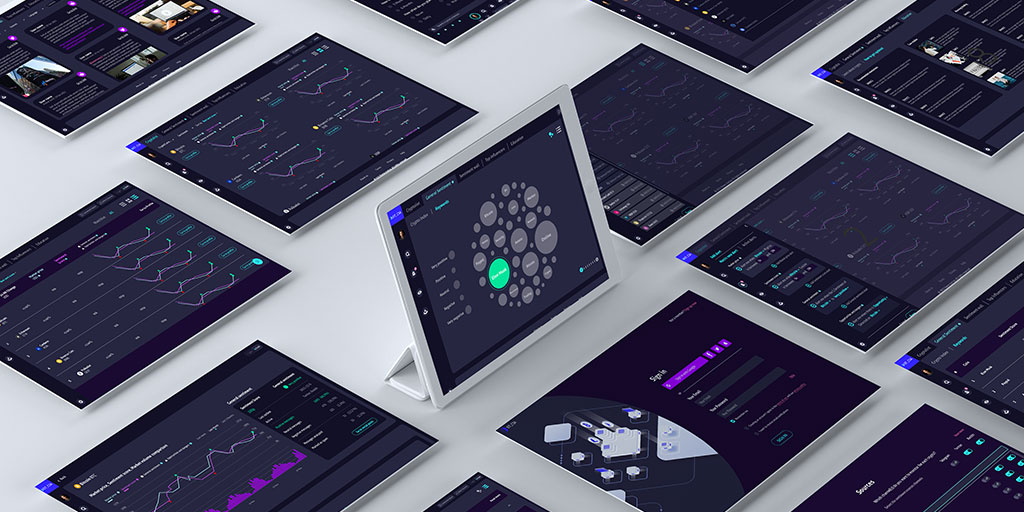
CSA, Sentiment-based decision support Platform for crypto-currency trading EIT Digital, European Research Project Share As a partner of the CSA-Crypto Sentiment Advisor (an EIT research project), Experientia co-designed a web-based dashboard to inform better decisions in the crypto market. Leveraging traders’ individual level of expertise, the solution aims to mitigate risk by using real-time community sentiment data. 3 things to know Understand the habits of cryptotraders By interviewing cryptotrading experts and cryptotraders with different levels of experience, we were able to understand their habits, their sources of information, and the web platforms currently most used by those who invest in cryptocurrencies. Define the value proposition Using co-design methodology we worked with other project partners to identify a USP and the platform’s MVP: a dashboard to inform better decisions in the crypto market by using real-time community sentiment data. Design and validate the MVP solution Based on the results of the research and the co-design work done with the project partners, we designed the UX/UI of the platform, validated it with user interviews, and defined web development specifications. Gallery In depth Service mix: Design thinking Prototyping Information architecture Participatory design Ethnography Context As a partner of the CSA-Crypto Sentiment Advisor (an EIT research project), Experientia co-designed a web-based dashboard to inform better decisions in the crypto market. Leveraging traders’ individual level of expertise, the solution aims to mitigate risk by using real-time community sentiment data. Challenge The platform is based on a sentiment analysis model for cryptocurrency using advanced machine learning methods. Investors can use the signals to manage volatile phases of their portfolio to be well positioned in difficult times. During the research phase, Experientia conducted research interviews with lead users and led co-design activities with project partners to identify the Value proposition and the MVP functionalities. In the design phase, we designed the dashboard prototype and validated it with potential users. Research During the “early bird period” November-December 2020 Experientia research team conducted remote stakeholder interviews. The in-depth interviews allowed us to investigate the research question from a broad, comprehensive perspective. The main objective of the research was to investigate and identify opportunities for helping cryptotraders with sentiment-analysis tool. Model At the beginning of 2021 Experientia conducted 2 workshop with all the partners. We shared insights from the stakeholders and user research phase to inform and define the value proposition. Through participatory and co-design methodologies we facilitated the development of the next phases as well as conducted UX concept ideation activities. Design Experientia utilized findings from research to frame and define solutions for the design phase. In particular we design and validate the HI-fi prototype of the Sentiment-based decision support Platform for crypto-trading. Related projects All Services Behavioral design Research and assessment Strategy Finance Banca 5, a new branchless bank model Consumer technologyFinance BancoSmart, an award-winning ATM FinanceHealth XME Salute: integrating insurance offerings with wellness and health practices Go back to our portfolio
Turin Public Libraries, redesigning the cultural experience

Turin Public Libraries, redesigning the cultural experience CSI Piemonte Share CSI Piemonte partnered with Experientia to redesign the new digital experience for Turin public libraries: an ecosystem of more that 15 local libraries spread across the Turin area. Weekly design thinking workshops and co-creation activities with the local libraries team allowed us to gather all the different perspectives of a complex reality diversified among the territory. 3 things to know One website, more that 15 local libraries The website of the Turin public libraries (“Biblioteche Civiche Torino”) gathers all the information connected to more that 15 local libraries spread across the territory. Every library has its own audience, events, reading proposals, services and articles. Library directors highlighted the importance of each library: every user sticks to his neighborhood library rather than being a frequent visitor to all libraries. For this reason, creating sub-homepages for each library was important to support users in their usual behavior using the service. Design thinking workshops Design thinking methodology was applied in order to achieve a final website that was cohesive and could meet all the different needs among the complex and diversified contexts of the territory. Weekly meetings with the librarys’ selected tea allowed a step by step approach and the possibility to validate each part of the website with the stakeholder in charge of that service: events, programs and projects, children section, historical and local collections. A piece of an ecosystem The website is a part of a complex ecosystem composed of a catalog online and a digital lending platform. The two services (catalog and digital lending) are not located within the Turin public library website but instead in different domains. These three platforms have to recall each other’s contents and give the perception of a solid ecosystem. Information architecture methodology and content organization were necessary in order not to lose any pieces during product integrations. Gallery In depth Service mix: Prototyping Information architecture Participatory design Useful links: Biblioteche civiche torinesi External link Context The Turin Public library website had to be updated in terms of information architecture and prioritization of informations, as well as visual presence and new look and feel. The portal is the final stage of the “Rethinking Turin Civic Libraries” project, launched in 2019 on the occasion of the 150th anniversary of the founding of the Central Civic Library and supported by Intesa Sanpaolo. Research An extensive desk research allowed the team to spot best practices and common design patterns used by the most important library websites. A detailed content audit was necessary to be sure that each information of the “old” website would have been revised during the redesign. Weekly meetings with stakeholders and two specific workshops (directors of local libraries and kids&teens audience) were the key stages to came out with important insights that led the design choices. Design The redesign of the website was supported by information architecture and wireframes activities. The responsive website is designed with a mobile first approach and uses common design patterns, usability rules and accessibility. See here for the final outcome of the project. Biblioteche civiche torinesi External link Related projects All Services Behavioral design Research and assessment Strategy Cities & InfrastructureSocial innovation ToNite: social innovation and urban regeneration in Turin, Italy Social innovation COE, Strengthening access to justice through non-judicial redress mechanisms HealthSocial innovation Singapore: a city for people aging gracefully Go back to our portfolio
BancoSmart, an award-winning ATM
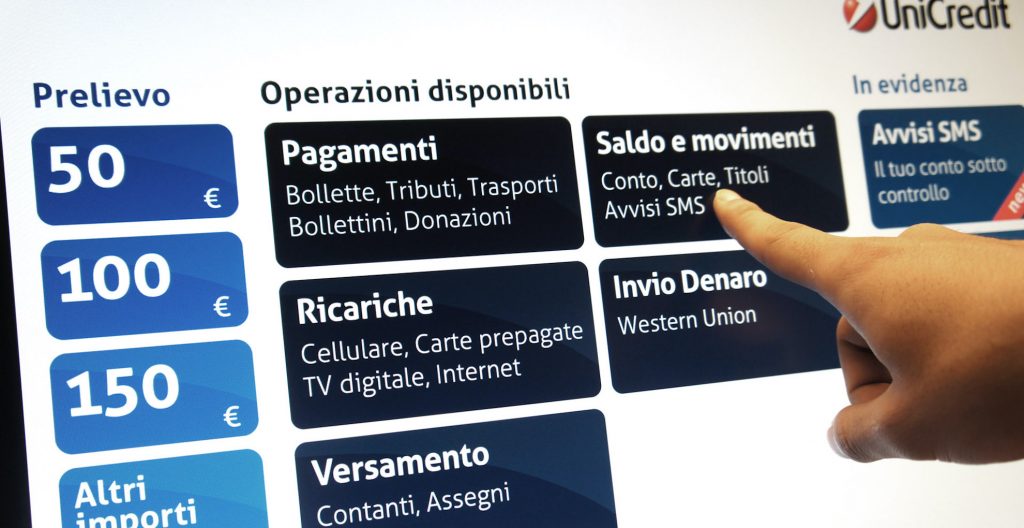
BancoSmart, an award-winning ATM UniCredit Share The human-centered approach is now central to the finance industry, as banks have become savvy in how to best connect to their customers’ needs and desires. As part of this trend, global banking and financial services company UniCredit Bank asked Experientia to create a user-friendly, people-centered ATM – the BancoSmart. 3 things to know Easier and faster The BancoSmart offers more services by using an advanced algorithm that offers users a personalized home page, geo-referenced billing options and tailored services. Improved usability Its UI makes it easier and more intuitive to use, including for people with poor vision; all levels of literacy and non Italian speakers. It is 33% faster in use, has attracted more than 25% of new (non UniCredit) customers, and reduced error rates (non-conclusive interactions) to less than 1%. First mover in Italy First Italian ATM using a touchscreen interface, allowing intelligent and optimized menu interactions. It has been rolled out all across the country. Gallery Video https://player.vimeo.com/video/110351007 In depth Service mix: Design thinking Information architecture Service design Useful links: ADI index showcase Blog post Context ATMs are highly regulated in Italy: to make banking accessible they have to provide a wide range of services, including the payment of various utilities. Many ATM interfaces are not user-friendly and force people to wade through a succession of many screens. They use a language and an organization that reflects the bank, rather than the lived financial experience of the customer. Challenge UniCredit came to Experientia to refresh and redesign the interface. It had to run on various ATM hardwares including legacy terminals of different providers with various screen sizes and tech specifications. We convinced the bank that it could be reinvented, even within the constraints of regulation, hardware and underlying software. Research Experientia carried out in-depth user experience research with ATM users across Italy, spot interviews of current ATM users, stakeholder interviews, card sorting sessions and heuristic evaluation of existing UniCredit and competitor interfaces. This provided foundation for the information architecture and service design of the ATM.We also conducted card sorting activities to create a new navigation structure that fits people’s expectations of where to find features and functions. Design Experientia designed a responsive full touchscreen design solution that works on the various ATM’s. We ran multiple cycles of design, prototyping and usability & user acceptance testing to ensure that the final interface is strongly based on people’s financial behaviors and exceeds their expectations and needs for ATM use. The new menu structure offers much clearer guidance on what functions are found in each menu area, and always offers people the chance to go back to the home page. It has now been rolled out to all UniCredit’s Italian ATM branches. Impact Experientia has reinvented the ATM interface for UniCredit – making it easier to use, faster, and with more services. One of the key innovations is its level of personalization – the ATM has a personalized homepage, with service offers tailored to people’s banking profiles, and a speedy withdrawal function that offers the three most commonly used withdrawal amounts, personalized to each individual user based on their past behavior. Placing these three amounts on the homepage cut the withdrawal time by 30%. Public reactions to the BancoSmart interface have been extremely positive, with clients commenting on the increased speed, legibility, appealing graphics, and the improvement in features and functions. The highly intuitive ATM interaction allows clients to easily navigate, locate and use functions, from simple features like cash withdrawals to more complicated functions like deposits, information retrieval, bill payments and mobile phone top-ups. The interface is visually attractive and easy to read, with large fonts and clear banking function categories. Bancosmart was selected for the ADI Design Index, the annual publication showcasing select Italian Design products considered for the Compasso d’Oro International Award. View our ADI Design Index showcase here. ADI index showcase Blog post Related projects All Services Behavioral design Research and assessment Strategy Finance Banca 5, a new branchless bank model Finance CSA: sentiment-based decision support platform for crypto-currency trading FinanceHealth XME Salute: integrating insurance offerings with wellness and health practices Go back to our portfolio

